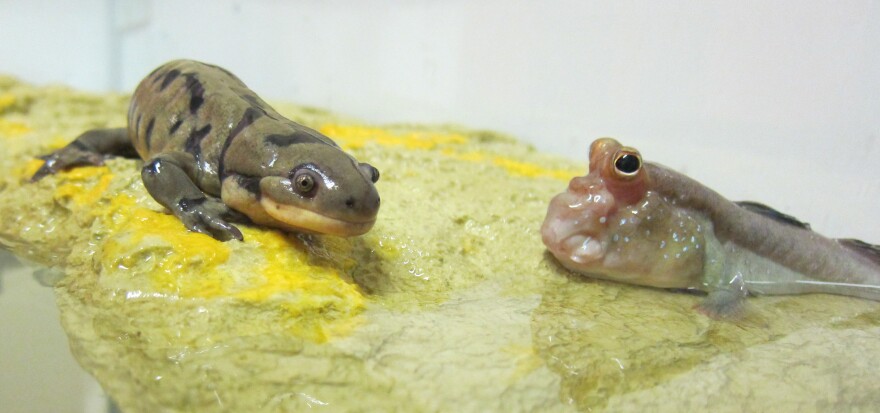In today’s Academic Minute, Dr. Richard Blob of Clemson University explains why the evolutionary migration to land was dominated by limbed species.
Richard Blob is a professor of biological sciences at Clemson University where his research is focused on the evolution of musculoskeletal function in animals. His lab seeks to understand how animal structure has diversified and changed through evolution by examining vertebrate muscle and bone function during locomotion. He holds a Ph.D. from the University of Chicago.
Dr. Richard Blob – Fins, Limbs, and Walking on Land
Almost 400 million years ago, animals with four legs left their home in the water to take their first steps onto land. Some fishes can also move over land using their fins, but what was it about having legs that made this one group of animals, called tetrapods, so successful – after all, they gave rise to every species of bony animal that now lives on land, including humans. To understand more about how our ancestors invaded land millions of years ago, my graduate student, Sandy Kawano, and I have studied walking in living mudskipper fishes and tiger salamanders,. Mudskippers walk on land by swinging their front fins forward at the same time, and then vaulting their body over their fins in a way that resembles how people walk with crutches. In contrast, salamanders swing their front and back legs from opposite sides of the body together a lot like a dog or a cat but with the legs out to the sides instead of lined up under the belly.

To measure how fins and limbs work differently for moving over land, we filmed the mudskippers and salamanders while they walked over a sophisticated scale called a force plate. This measured the forces animals experience from supporting their body, and we found that fish fins have to support the body in a different way than limbs. With fins the forces are tilted more toward the middle of the body, but with legs the forces on bones point more upwards. This change might make it easier for animals with legs to deal with forces on their bones. This could have been a critical consequence of the fin-to-limb transition, and might help explain why our tetrapod ancestors were more successful than other fishes once they moved onto land long ago.
Production support for the Academic Minute comes from Newman’s Own, giving all profits to charity and pursuing the common good for over 30 years, and from Mount Holyoke College.




